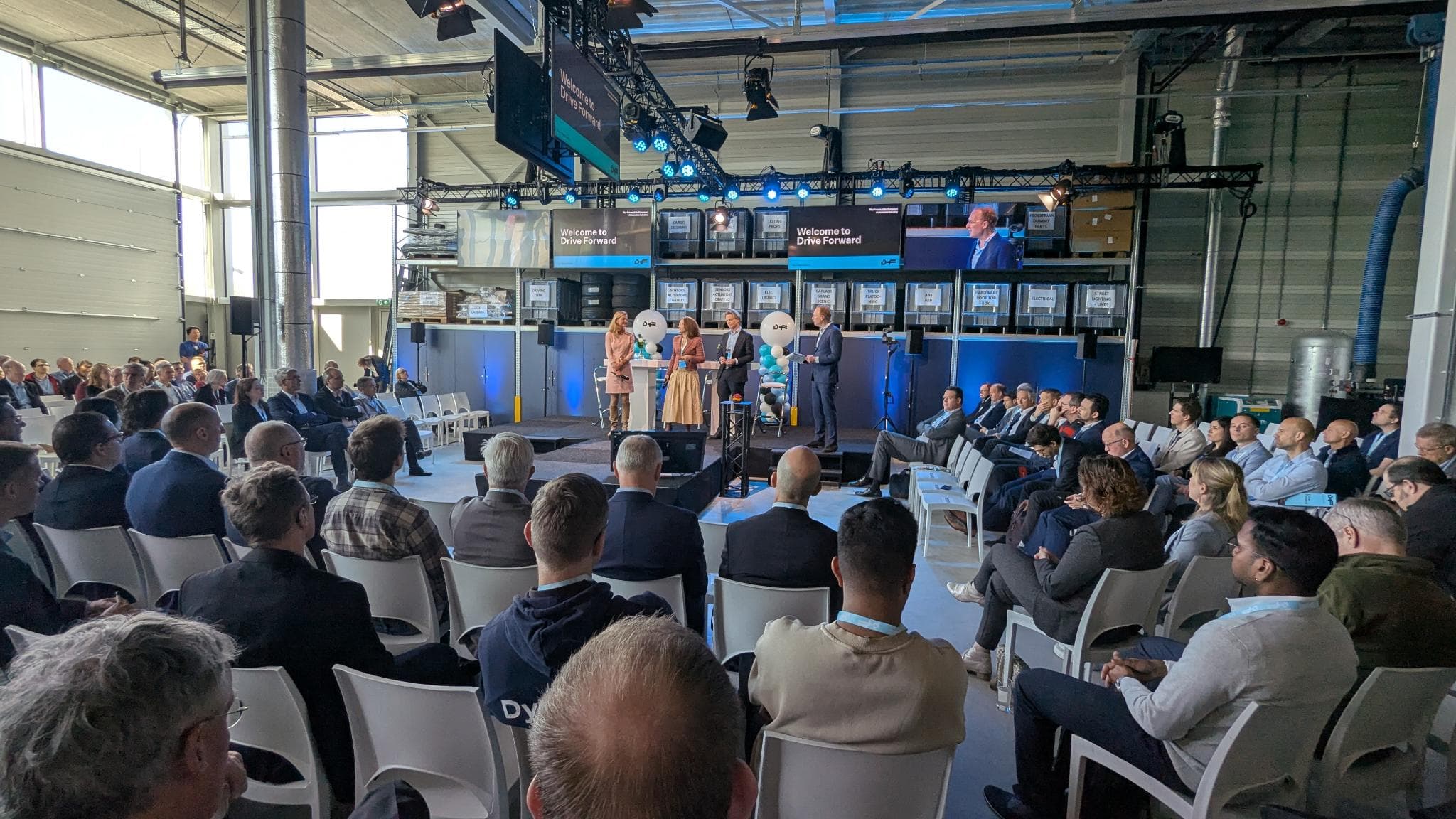Europe at the crossroads: Building competitive digital mobility
At Drive Forward in Helmond, industry leaders mapped out the path from strategy to deployment - and the urgent need for Europe to catch up.
Published on April 10, 2025

Drive Forward 2025 Helmond
Bart, co-founder of Media52 and Professor of Journalism oversees IO+, events, and Laio. A journalist at heart, he keeps writing as many stories as possible.
What will European mobility look like in 2040? According to Casper Veenman from Roland Berger, it’s a future full of possibilities, but only if Europe acts now. Speaking at the opening of the Drive Forward event in Helmond, Veenman painted a vivid picture of the challenges and opportunities ahead. “We have the obligation to build our own production, our own technology - not just regulate everything,” he said. “We have to be front-runners.”
It was a fitting start to a day devoted to the digital transformation of the automotive sector, bringing together top-level thinkers from across industry, policy, and academia. The question threading through every panel: Can Europe keep up with the US and China in the global race for mobility innovation? The answers varied from “sure” to “not any time soon”.
”It will be the age of China and the Global South”
Veenman’s talk didn’t sugarcoat the realities. Global vehicle production is becoming increasingly polarized, with geopolitical tensions, supply chain shifts, and regionalization all driving the need for local resilience. “We will sell fewer vehicles for higher prices, but with more value-add; less export, more local production,” he predicted. The message was clear: the age of European complacency is over, with 79% of global production volume growth now driven by China. Some numbers: fast forward to 2040, the European global market share will be down from 18% to 16%, whereas China will grow from 33% to 36%, and the Global South from 17% to 23%. Also down are North America, Korea and Japan. ”It will be the age of China and the Global South.”
At the same time, Veenman emphasized that the future of mobility is digital: autonomous, connected, AI-driven, and electric. By 2040, he expects automated driving, intelligent design via AI, and software-defined vehicles to be the norm. But success, he argued, will require intense collaboration. “You can’t be the best at everything. You need partnerships, up and down the value chain.”
That theme - strategic collaboration in simulation, sandbox, and real-world cases - resonated throughout the day’s sessions.
“Legacy holds us back"
In the first panel, experts including Maurice Geraets (NXP), Anna Larsson (RISE), Joost Vantomme (ERTICO), and Kristóf Almásy (DG Mobility) tackled Europe’s place in the global digital race. Can we close the gap with China and the US? The consensus: Europe has strengths in safety, systems engineering, and high-tech manufacturing, but needs bold industrial policy and harmonized regulation to scale innovations fast.
“China is moving much faster”, Maurice Geraets said. “And I know because the Chinese are NXP’s leading customers.” But what’s holding Europe back? Geraets: “Legacy holds us back. New companies have a different mindset. So let’s double the speed of innovation. Invest more, but also do it smarter. It’s feasible if we thanks to AI. And our ability to act in a collaborative way.”

Drive Forward 2025, Helmond
From strategy to action
A practical turn followed, with speakers from V-Tron, VDL, and Einride sharing how they are embedding AI and digitalization in real-world products. The looming US ban on Chinese software emerged as a geopolitical wildcard. “The choices ahead aren’t always rational; but they will have massive impact,” Veenman had warned.
Glenn Haverkort from VDL highlighted the critical need for speed. “It’s about getting from roadmap to rollout fast,” he said. For Zeljko Jeftic, it’s already happening: “Autonomous trucks are not future tech. They’re here.”
Digital on the Road
The next panel explored what it takes to get new technologies onto Europe’s roads. Fragmented rules, slow permitting, and conservative approaches still hinder deployment. Speakers from RDW, TomTom, Ansys, and Einride called for more real-world experimentation and proactive regulatory frameworks.
“Once a leader in mobility, is the Netherlands losing its edge?” the moderator asked. The answer: not if we act now.
Digitalization and our economy
The closing morning panel - featuring Peter Stolk (Holland High Tech), Günther Gülker (German-Dutch Chamber of Commerce), and van Margriet van Schijndel (TU Eindhoven) brought all that full circle. What are Europe’s true control points? Where can we lead?
Stolk emphasized Europe's strengths in systems engineering and integration. “We may not build the full car, but we excel in combining components into complex systems. That’s our value.” Gülker added a diplomatic note: “The Chinese are fast. But if Germany and the Netherlands work together, we can build a powerful innovation bloc.”
And trust, according to van Schijndel, is Europe’s ultimate competitive edge: “People want to feel safe and empowered by digital systems. If we can lead in trustworthy, explainable AI for mobility, that’s a unique selling point. Europe must define its own mobility system. We can’t be fully dependent on technology from elsewhere.”
Throughout the day, which also saw several ‘deep dive sessions’, one message stood out: collaboration isn’t optional - it’s survival. From suppliers and startups to governments and OEMs, everyone must play their part. As Veenman put it: “Some companies will fail. Some will thrive. It’s up to us to ensure that most thrive.” Smiling: “At least in this room.”
